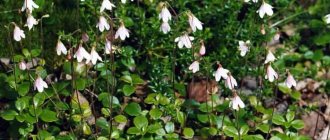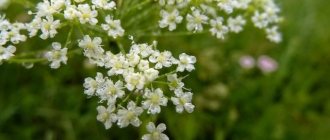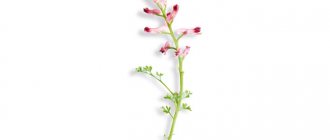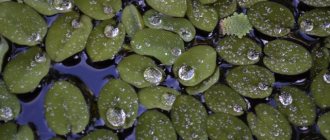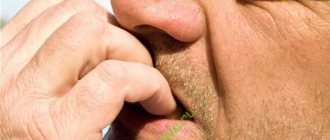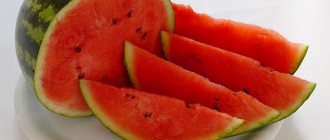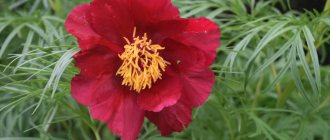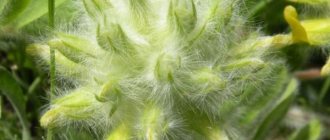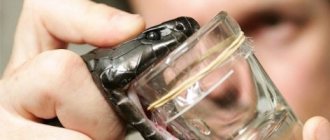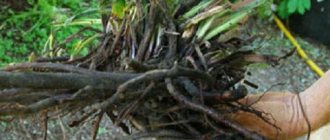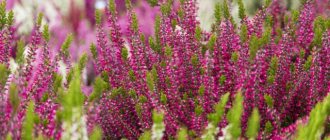Titles and description
This plant has many names, such as:
- Honey cake.
- Honey grass.
- Whey herb.
- Breast.
- Spring bedstraw.
- Wormworm.
- Yellow porridge.
- Bedstraw yellow.
Bedstraw is one of four hundred representatives of herbaceous plant species belonging to the bedstraw genus. This genus is part of the family called Rubiaceae, which are dicotyledons. The bedstraw we are considering has four subspecies.
https://www.youtube.com/watch?v=https:accounts.google.comServiceLogin
This plant is a perennial. Its root is very branched and tenacious, the stem is very low. When it comes into contact with the ground, it usually takes root. Like all others, a true bedstraw can rise above the soil only with the help of grass growing nearby, which is upright.
The medicinal properties of bedstraw were appreciated by ancient people. These include the following:
- Anti-inflammatory.
- Painkiller.
- Sweatshop.
- Diuretic.
- Relaxing.
- General strengthening.
- Mild laxative.
- Wound healing.
- Hemostatic.
- Relieving spasms.
Thus, the real bedstraw, a photo of which we present in the review, is a storehouse of healing properties.
This annual plant belongs to the Rubiaceae family. It is virtually impossible to destroy and is incredibly resistant to most chemicals. The plant is covered with small but very sharp teeth, with the help of which it clings to everything that is within reach.
On thin, ribbed and curved stems there are whorled narrow leaves, which are collected in six to twelve pieces. The leaves are lanceolate, up to 25 cm long, with fringe along the edges. The calyx of the tenacious bedstraw is absent, and the corolla, fused at the base, has four stamens.
The chemical composition of the plant has not been studied enough, since in our country it is not used in traditional medicine. Some sources have information that it contains citric, rubichloric and gallic acids, saponins, flavonoids, monotropein, hydrocarbons, vitamin C. Microelements include copper, zinc, boron, iron, strontium.
Strong astringent properties of tenacious bedstraw are noted due to the presence of tannin in the grass. Its choleretic and diuretic effects are known. Preparations based on this plant are able to soften infiltrates and exhibit weak antispasmodic, analgesic, hemostatic and antifever properties. In addition, traditional healers use the positive activity of the herb in healing wounds and to alleviate the general condition of snake bites.
There is information about the effectiveness of the plant in the treatment of rashes, ringworm, and ulcers.
Composition of bedstraw
The healing properties of this herb are explained by the fact that it contains the following chemical compounds:
- quinones,
- flavonoids,
- glycosides,
- organic acids.
Due to the presence of coumarins in its composition, the plant has a characteristic smell of honey, and pepsin gives it the ability to coagulate.
Bedstraw tenacious contains such rare compounds as:
- saponin,
- red dye,
- glycoside asperuloside.
Appearance
The bedstraw looks like this:
- It reaches a height of 60 to 120 cm.
- It has a very branched root.
- It has a straight stem, weak, with short pubescence.
- The leaves of the true bedstraw in the lower part are velvety, grayish in color. And on top - narrow, with a sharp end, shiny, dark green. Their length varies from one to three centimeters, and they reach two millimeters in width. In a whorl (part of a stem or branch where there are three or more leaves or flowers in one place), bedstraw has a width of 8-12 mm.
- A photo of a true bedstraw demonstrates that its fruit resembles a nut, which is visually divided into two parts by a longitudinal constriction. The color of the fruits is brownish-brown, they are covered with sparse fluff.
- The flowers of the true bedstraw, photos of which are presented below, form a dense panicle with an elongated pyramidal shape. (A panicle - in botany - is a complex inflorescence that branches repeatedly and has simple inflorescences at the ends of the branches). The diameter of the flowers is from two to three millimeters, they are small, bright yellow, emitting the smell of honey. Flowering time is somewhere in June or July.
Types of bedstraw
In the world of fauna, there are about 400 species of bedstraw, which are extremely common in different territories, mainly in the Northern Hemisphere. Many of them are honey plants.
True bedstraw
A perennial with a thin, long and branched rhizome. A distinctive feature of this species is a branched or straight stem with four protruding bridles, reaching more than a meter in height.
The leaf blade is pointed in shape, curved at the edges, has a shiny coating on top and grayish pubescence below. Numerous yellow flowers are arranged in large, loose panicles. Blooms from June to September.
Also read: Hogweed: about the benefits and harms of the plant
True bedstraw
Fragrant bedstraw
The height of the plant ranges from 10 to 60 cm. The stem is smooth, tetrahedral and non-branching. The leaves are 2–3 cm wide and 4–5 cm long, have a short point at the apex and a whorled arrangement. Each whorl contains 6–8 pieces.
The inflorescence is formed from several semi-umbrellas, has bract leaves and is formed at the top of the plant. The flowers are white in color with short stalks and have a strong scent, which is reflected in its name. Flowering occurs at the end of spring - beginning of summer. In July–August, the fruits ripen, consisting of two nuts coated with hook-shaped bristles.
Fragrant bedstraw
Gallery: bedstraw (25 photos)
Northern bedstraw
Honey grass, reaching a height of 90 cm, has lanceolate leaves endowed with three veins, which are located in whorls of 4 pieces. The herbaceous plant is famous for the beautiful shape of small white flowers collected in paniculate inflorescences. Begins to bloom in May.
Often found on rocky slopes, along the banks of reservoirs and the edges of roads, as well as in wet floodplain areas and lawns. It has found wide use for medicinal purposes.
Northern bedstraw
Common bedstraw
The low-branching faceted stem can grow up to 85 cm. The linear leaf blades are slightly pubescent at the top and slightly more pubescent at the bottom. At the end of June, golden flowers bloom on the tops of the shoots, which decorate the plant until September.
The habitats of the herbal plant are dry meadows and slopes, slopes and edges . The rich content of nutrients makes it useful in home treatment.
Common bedstraw
Soft bedstraw
A perennial with spreading tetrahedral stems growing up to 125 cm. Linear-oblong pointed leaves, collected in 6-8 pieces, are small in size: 2 cm in length and up to 4 mm in width. Small white flowers are arranged in inflorescences resembling a spreading panicle. Bedstraw blooms throughout the summer season.
Soft bedstraw
Cleavers
This type of plant is also called Velcro, Velcro, Clingweed, Flax Bedstraw, and Scrape. The thin ribbed stem is studded with small teeth, thanks to which it clings to cereal plants. It is resistant to bleeding.
Narrow whorled leaves are attached to the nodes of the stem. Flowers of a white or greenish hue are collected in false umbrellas with a missing bowl. The plant is used in the fight against many diseases, including cancer. The herb is indispensable for pathologies and damage to the skin.
Also read: Milk thistle (milk thistle): medicinal properties and application features
Where does it grow
The grass of bedstraw is widespread on the territory of the Eurasian continent. This plant is also found in our country. It grows in all regions of Eastern and Western Siberia and the Far East. And also in countries neighboring Russia - in Belarus, Central Asia, the Caucasus and Ukraine.
According to one version, the name of the plant comes from the word “mar”, which in some Russian regions means low-lying wetland. Although bedstraw does not grow directly in swamps, it is often found near them, in a humid environment. It can also be found in dry areas - in meadows, clearings, along roads and paths.
Northern bedstraw: botanical description
The plant is tall, strong, erect stems grow up to 80 cm. They have a simple structure, most often smooth, less often - stiff-haired, branched or simple. Narrow-lanceolate leaves are collected in whorls of four, rich green in color. The flowers form a paniculate inflorescence and have a fragrant white corolla. There are five possible variations of the plant based on the type of leaves and spiny hairs. The rhizome is thin, creeping type. This is a Eurasian plant species, widely distributed in our country throughout the European part and in Siberia. Northern bedstraw prefers to grow in meadows, bush thickets, along roads, and at the edge of forests.
Collection and procurement of raw materials
True bedstraw, the medicinal properties and contraindications of which will be described below, must be harvested during flowering, starting at the end of May and ending at the beginning of September. The roots can be dug up all summer. All parts of the plant are collected, including the rhizome. In this case, the woody stems are not touched.
The most valuable for medicinal use are flowers and herbs. The panicles are dried in a well-ventilated room. You can also carry out this process outdoors, in a dark place - if the weather permits. It should not be hot, with a light breeze.
In order for the inflorescences to dry evenly, it is necessary to distribute them in a thin layer on sheets of paper or on scraps of natural fabric. From time to time they need to be tossed and turned over.
There is another way: to form bunches of flowers, tie them in several pieces and hang them by hooking them on a hook or attaching them to a rope with clothespins. Ready-to-use raw materials are stored for three years. Sometimes fresh grass is pressed, and the resulting juice is diluted with alcohol - thus increasing the shelf life. Bedstraw grass has a bitter, astringent taste.
Harvesting the raw materials of tenacious bedstraw is quite simple: the flowering part (about 30-35 cm), which is located at the top, is cut off with scissors. The leaves are carefully torn off. Then the raw materials are laid out on paper or fabric under a canopy or in a room with low humidity. It is necessary to shake the grass of the tenacious bedstraw at least twice a day. The finished raw materials are placed in paper or fabric bags.
Preparation and drying of raw materials
All components of the plant have pharmacological properties, but most often only the herb is used. Features of collecting bedstraw are:
- the plant is harvested during the flowering period - from June to September;
- roots can be collected throughout the summer;
- Young plants are to be collected; grass with a woody stem is not recommended to be harvested.
To preserve the healing properties, the collected plant must be properly prepared. The bedstraw panicle is dried in a ventilated room protected from the sun. To dry evenly, parts of the plant need to be laid out on paper, periodically tossed and turned over. You can dry the panicle using another method - parts of the plant need to be tied into bunches and hung on a rope.
Dry bedstraw can be stored for no more than three years. The shelf life increases if you squeeze the juice out of fresh herbs and add alcohol to it - make a tincture.
Bedstraw tincture
Use in different areas
The diverse properties of bedstraw have been used by humans for a long time. Here are some examples of its use:
- In past times, mattresses were filled with it after drying. This was done due to the fact that bedstraw contains a substance such as coumarin. Its smell contributed to a smaller spread of fleas.
- Due to the presence of chymosin in the flowers, this plant was used in the manufacture of cheeses, thickening milk with their help. To give the cheese a bright color, juice squeezed from freshly harvested specimens of the plant was added to it.
- In the textile industry, bedstraw was used to dye fabrics, giving them a bright yellow, golden or red color.
- The flowers of this plant contain honey glands that secrete nectar (juice that contains a large amount of sugars). Therefore, bedstraw is of interest to beekeepers.
Use in folk medicine
The grass tenacious bedstraw has been used by folk healers around the world for a long time. They recommend using preparations based on tenacious bedstraw for skin diseases: minor rashes and inflammatory processes, acne and boils.
The properties of tenacious bedstraw have been used in the treatment of inflammation of the bladder; healing compounds are used to obtain a mild diuretic effect. Tenacious bedstraw is an effective hemostatic and antifever agent.
Healers of Ancient Greece were well aware of the medicinal properties and contraindications of tenacious bedstraw. They were sure that this remedy would protect against the bites of poisonous snakes. In addition, it has proven itself in the treatment of dropsy, some liver diseases, and scurvy. Modern traditional healers recommend taking a tincture of this herb for eczema, psoriasis and systemic lupus erythematosus.
Healers believe that tenacious bedstraw will be useful for those who have a predisposition to heart and vascular diseases. It purifies the blood and strengthens the blood vessels and purifies the blood, recommended for epilepsy and scurvy. Effectively relieves pain from rheumatism and kidney diseases. In powder form it is used to disinfect wounds on the body.
Northern bedstraw: medicinal properties
Official medicine and pharmacology have established that the plant has pronounced calming (sedative) properties. It has long been used in Tibetan therapy (rhizomes), as well as in Belarus, Yakutia, Altai, and Western Siberia. Bedstraw is valued mainly for its diuretic effect. Its use is approved by medicine, but not in its pure form, but as part of herbal preparations. It is popularly used for kidney diseases, in particular to relieve swelling that occurs with various pathologies of the organ.
In addition, it is known that northern bedstraw has a regenerating, astringent, anti-inflammatory and hemostatic effect.
True bedstraw: contraindications for use
https://www.youtube.com/watch?v=ytcopyrightru
In addition to the great benefits mentioned above, bedstraw has a number of contraindications. They are as follows:
- Since it has a strong diuretic effect, this plant should be used with great caution by people suffering from diabetes.
- Bedstraw has a stable astringent effect, that is, when applied topically, it compacts tissues or forms a tight protective film. Therefore, treatment courses should include breaks of one week.
- Due to some toxicity of this plant, it is not recommended for pregnant, lactating women and young children.
- Another factor of contraindications is individual intolerance to the components that make up bedstraw.
It should also not be used for diseases that include:
- Intestinal obstruction.
- Exhaustion of the body.
- Vein blockage.
- Stones in the kidneys.
- Low pressure.
Since the medicinal properties of tenacious bedstraw are used in folk medicine, our readers are probably interested in learning how medicinal preparations are prepared.
Like any medicinal plant, tenacious bedstraw has both beneficial properties and contraindications. This herb produces a powerful astringent effect due to the large amount of tannin it contains. Therefore, if long-term use of drugs is required, it is necessary to take breaks for a week every fourteen days.
It is not recommended to use preparations based on bedstraw for patients with diabetes mellitus, since the plant has a powerful diuretic effect. It is necessary to pay very close attention to the recipe and dosage, since bedstraw belongs to the group of slightly poisonous species. The use of drugs based on it is strictly prohibited for pregnant women and children, as well as people with individual intolerance.
Use of bedstraw
Photos and beneficial properties of bedstraw are of particular interest to traditional medicine. Preparations based on the plant are used for respiratory, digestive and cardiovascular ailments.
For bronchitis
True bedstraw has antibacterial and expectorant properties. For bronchitis, the following infusion is recommended for use:
- The dry grass of the plant is crushed in a volume of 10 g.
- Pour the product into a glass of hot water.
- Leave covered for an hour and strain to remove sediment.
The resulting infusion is divided into three equal portions and drunk throughout the day in between meals. It is recommended to warm the product before use.
For cirrhosis of the liver
Tenacious and true bedstraw cleanses the liver of toxins, relieves inflammation and prevents fatty degeneration of the organ. Herbal juice is used for treatment:
- Fresh stems and leaves are collected and washed under the tap to remove contaminants.
- Scald with boiling water for disinfection.
- Grind in a blender to a paste.
- Squeeze through cheesecloth to obtain clear liquid.
Take 10 ml of juice on an empty stomach up to three times a day.
For angina pectoris
Real and tenacious bedstraw improves the condition of the cardiovascular system and helps relieve the manifestations of myocardial diseases. For angina pectoris, the following infusion is recommended for use:
- Dry roots of the plant are crushed in a volume of 20 g.
- Pour 500 ml of boiling water over the raw material.
- Leave covered for half an hour.
- Strain through folded cheesecloth.
The infusion is consumed 100 ml three times a day.
For gynecological inflammations
The true and tenacious bedstraw has good analgesic and anti-inflammatory properties. For endometritis and fibroids, as well as for gynecological infections, use the following infusion:
- Pour 400 ml of fresh boiling water into 60 g of dry herbs.
- Leave in a thermos for four hours to infuse.
- Strain.
The finished product is poured into a filled bath and taken for 15 minutes. It is best to carry out the procedure at night.
For breast tumors
For breast formations in women, an infusion of tenacious or real bedstraw is beneficial. It is done using this algorithm:
- Grind 10 g of dry stems and flowers of the plant.
- Steam the raw materials with a glass of boiling water.
- Leave for half an hour and filter.
The product is taken 150 ml three times a day.
For tumors in the chest, compresses from tenacious bedstraw leaves can be applied to problem areas
For impotence
Real or tenacious bedstraw improves blood flow in the pelvic organs and balances hormonal levels in men. When potency weakens, the juice of fresh stems is recommended for use. You get it like this:
- Wash the young grass of the plant from contaminants.
- Place in a blender or meat grinder and grind until smooth.
- Squeeze through gauze.
We recommend reading: Panzerina (panzeria) woolly: medicinal properties, applications, reviews
The juice should be taken three times a day, 10 ml. The duration of the course is at least a month. For medicinal use, it is necessary to select only healthy stems and leaves of the plant that are not damaged by fungi and pests.
For oncology
Real bedstraw, like the tenacious one, is used in folk medicine in the complex treatment of oncology. The following collection is recommended for use:
- The flowers of the plant are mixed with celandine, 10 g each.
- Add an equal amount of thistle buds and tartar grass.
- Measure out two large spoons of the mixture and pour 500 ml of hot water into a thermos.
- Leave under a tightly screwed lid for half an hour.
The strained infusion is consumed 150 ml before meals three times a day.
Warning! Tenacious and true bedstraw cannot serve as the only cure for cancer. The infusion must be combined with official medications.
For inflammatory liver diseases
For liver diseases and after severe poisoning, a decoction of tenacious bedstraw is recommended for use. The recipe looks like this:
- A large spoonful of dry raw materials is brewed with a glass of boiling water.
- Heat over low heat for five minutes.
- Cool the product to a warm temperature and filter.
The decoction should be divided into three equal parts and taken before meals throughout the day. In total, treatment with tenacious and true bedstraw is continued until the condition improves.
For eczema and boils
For inflammatory skin ailments and purulent abscesses, fresh plant juice helps well. Tenacious or true bedstraw is processed as follows:
- Grind the washed fresh stems and leaves into a paste.
- Squeeze through folded gauze into a glass container.
The resulting product is applied to the affected areas several times a day.
For diabetes
Real bedstraw juice reduces blood glucose levels and improves the functioning of the pancreas. Traditional medicine recommends the following algorithm:
- A handful of fresh leaves and stems are washed to remove dust.
- Scald with boiling water to eliminate germs.
- Grind thoroughly and squeeze through a sieve and cheesecloth into a separate container.
The juice is consumed after meals, two large spoons three times a day. You cannot add honey or sugar, even if the taste of the product is unpleasant - this will reduce the effectiveness.
For kidney stones
You can use real and tenacious bedstraw for sand and small stones in the kidneys. For treatment, a diuretic preparation is prepared:
- Mix 20 g of lovage herb with the same amount of madder.
- Add the same amount of coriander fruits and wild carrot seeds.
- Add 10 g of gorse and bedstraw stalks.
- Measure out 15 g of raw material and pour in 250 ml of hot liquid.
- Leave covered for two hours.
The strained infusion is taken 45 ml three times a day on an empty stomach.
For large kidney and gallstones, you cannot use tenacious and true bedstraw - it will cause pain
Contraindications to the use of bedstraw
The benefits and harms of bedstraw depend on the characteristics of the body. You should not use herbal products:
- with individual intolerance;
- for diabetes mellitus;
- during pregnancy and during feeding;
- with a tendency to constipation.
Medicines are not offered to children under 12 years of age; tenacious and true bedstraw contains toxic components. The drugs are used with caution in diabetes; due to the diuretic properties, the herb can cause harm.
Ingestion
Internal use of bedstraw is indicated for the following types of diseases:
- Angina.
- Cold.
- Pneumonia and other diseases that are accompanied by cough.
- Atherosclerosis (damage to the arteries due to improper metabolism of fats and proteins).
- Skin abnormalities accompanied by pain.
- Heart trouble.
- Gastroenteritis (inflammation of the intestines and stomach).
- Gastralgia (pain in the abdominal area).
- Intestinal colic.
- Dysentery.
- Malfunctions of the biliary tract and liver.
- Women's diseases.
- Nephritis (kidney inflammation).
- Neurasthenia.
- Epilepsy.
- Diabetes.
- Bleeding.
Instructions for use
In folk medicine, there are many recipes based on bedstraw. Here are just some ways to use it:
- Real bedstraw juice . Fresh juice is used in many cases. In particular, it helps reduce the production of breast milk, therefore it is indicated when weaning a child from the breast. Take a tablespoon three times a day. If necessary, the juice can be preserved by adding alcohol. On average, a liter of juice requires a glass of vodka.
- Plant based tea . Bedstraw in the form of tea is recommended for urinary retention, kidney inflammation due to hypothermia, to combat edema, and so on. To prepare, you need to pour two teaspoons of dry herbs with 250 ml of water. The water is brought to a boil, then the raw materials are cooked for another 1-2 minutes. It is recommended to drink 2-3 glasses of this tea per day. A stronger liquid is prepared for external use. In this case, you need to take a tablespoon of raw material per glass of water. The decoction can be used as compresses to combat thermal and traumatic skin damage.
- Bedstraw infusion . Indicated for skin defects and disorders of the digestive tract. To prepare, you need to pour half a liter of boiling water over a tablespoon of herbs in a thermos and leave to steep for four hours. It is recommended to consume 100-150 ml up to four times a day.
- Bedstraw powder . The herb powder helps with diarrhea accompanied by blood. To prepare it, you need to grind the dried flowers of the plant and place them in a tightly closed container for storage. Take two grams as needed.
- Ointment for wound healing . For it you will need the same powder based on bedstraw flowers. You will need a fat base: Vaseline, lanolin or nutria fat. Raw materials and base should be taken in a ratio of 1:5. The ointment can be used to combat boils, burns, and ulcers.
- Collection for removing stones from the body . To prepare such a collection, you need to take 20 grams of wild carrot seeds, lovage herb, coriander fruits, madder herb, as well as 10 grams of gorse and bedstraw tops. Pour a glass of boiling water over a spoon of this mixture and let it brew for 1.5-2 hours. Take 1-3 tablespoons before meals.
- Use in oncology . In folk medicine, bedstraw has been used for centuries in the fight against cancer. So, for uterine cancer, you need to mix the same amount of bedstraw flowers, celandine and tartar grass, and thistle basket. Two tablespoons of this mixture should be poured with half a liter of boiling water. This must be done in a thermos. Leave to brew for 30 minutes, then strain. You need to consume 100-150 ml before meals.
- Treatment of diabetes mellitus . Tenacious bedstraw can be used to assist in the treatment of diabetes mellitus. It is necessary to prepare a collection of two tablespoons of Jerusalem artichoke tubers, adding half a spoon each of grass or juice of tenacious bedstraw, bean leaves, cap cap, dandelion roots and corn silk. Pour two tablespoons of this mixture into half a liter of boiling water and let it brew. Drink half a glass 3-4 times a day, preheated.
- For cirrhosis of the liver . For liver cirrhosis, bedstraw also helps as a main remedy. Take it 2-3 tablespoons 20-30 minutes before meals. In this case, the juice should be used fresh, not preserved with alcohol. It is recommended to take milk thistle seed powder at night.
Forms of use of bedstraw
For internal and external use of bedstraw, a variety of forms are used. These include powder, freshly squeezed juice, tincture and steam. Bedstraw can also be used in the form of an ointment, which is prepared by rubbing it with butter or other fat.
The powder, made from the dried and crushed plant, is used as a powder. To prepare the infusion, take five tablespoons of herbs and half a liter of boiled water. The mixture is infused for five hours, after which it is carefully filtered.
Infusion for kidney stones
Four spoons (teaspoons) of bedstraw raw material, pour 0.5 liters of boiling water. The herb is infused for at least three hours, after which the infusion can be filtered. For infusion, it is better to use a thermos, since it is important to take the infusion hot four times a day, a third of a glass in small sips. The course of treatment is no more than three weeks, then you need to take a break for at least two weeks.
To prepare the tincture, grind freshly harvested herbs and fill a 0.5-liter glass bottle halfway with it. Fill the rest of the container with vodka up to the neck. Place in a dark place and shake daily. After three weeks, remove the mixture and strain.
Rub your sore joints three times a day. However, you need to know that the course of treatment cannot last more than two weeks, then a break must be taken for a month.
Pour three tablespoons of raw material into three glasses of boiling water. Wrap it up and leave the composition to infuse for four hours, then strain it and use it for lotions and compresses for boils, acne, scrofula, and lichen. This infusion can be added to a warm bath. Compresses and lotions are applied once every two days.
Honey cake, Chervishnik - Yellow bedstraw
HONEY COOK, WORM COOK, YELLOW BURN - AND ALL THIS IS YELLOW OR REAL BEDSTAWN
Golden flower with a honey aroma.
Bedstraw grows on dry hills, meadows, near roads, in fields, among bushes. Distributed everywhere. It blooms from mid-June to the end of August, but of course the most vigorous flowering occurs now - in June. Then you will still see single flowers, along with faded ones. It is possible to prepare them, but it is time-consuming and labor-intensive.
The grass is collected when the plant is flowering, cutting off only the upper flowering parts. Dry Bedstraw in well-ventilated warm rooms or outdoors under canopies, laying out a 2-3 cm layer on fabric or paper.
A pleasant, slightly sour-bitter and slightly astringent summer drink made from star flowers is considered an excellent tonic and refreshing remedy.
All types of honeyberry, including tenacious bedstraw, Siberian, fragrant, soft, differ from each other in chemical composition only in the amount of substances they contain. But traditional healers use true and tenacious bedstraw more often than other species.
Popularly, true bedstraw is called whey grass, honey grass, honey grass, yellow porridge, worm grass, and breast grass. Each of the names is associated with the specific application, appearance and melliferous properties of the plant. Widely known in ancient times, the yellow healer is almost forgotten today. In vain. The possibilities of this herb are diverse, and the results of therapy are positive.
Bedstraw is indicated as a sedative and analgesic. It is prescribed for kidney ailments, stomach pain, diarrhea, jaundice, various bleeding, for the treatment of skin rashes, wounds and abscesses, as well as for hysteria and epilepsy. In addition, the plant has been proven effective in treating skin cancer.
Externally, various decoctions and infusions of bedstraw are prescribed for bruises, purulent wounds and cuts, as well as for the treatment of extensive burns.
A decoction from the aerial part is often prescribed by gynecologists for douching for uterine cancer and cervical erosion. In case of infiltration of the mammary gland, it is recommended to apply pounded gruel from the herb of the plant to the chest area.
For dysentery, taking the herb powder orally is indicated.
Healing bedstraw juice is prescribed for diabetes mellitus.
If there are ulcers, it is recommended to cover the wounds with plant powder.
Ointment made from the juice of the grass effectively relieves inflammation from abscesses.
If the bleeding from the nose does not stop, the juice of the bedstraw is drawn into the nostrils. A paste of fresh herbs is used to relieve pain from bites.
Bedstraw rhizome is one of the best antipyretics. There is evidence that its decoction improves potency and restores the menstrual cycle.
RECIPES
- Cardiovascular diseases. An infusion is used, where the components are dry bedstraw grass - 2 tsp, boiling water - 250 ml. Pour liquid over the raw materials, cover and leave for 2-3 hours. After straining, drink the solution 1 tbsp. l. 2-3 times a day half an hour before meals. The course lasts 7-10 days. Then a break of 1-2 weeks is required.
- Diseases of the liver and digestive organs. Honey cake stimulates the production of bile and gastric juice, normalizes metabolism, and fights inflammatory processes in the gastrointestinal tract. Use a decoction of crushed herbs (2 tbsp) in water - 250 ml. Pour the raw material with liquid, boil for 5 minutes, leave for 2-3 hours, filter, bring the amount of decoction to 250 ml. Drink 100-200 ml only in freshly prepared form three times a day 30 minutes before meals. The course of therapy is 3-5 weeks.
- Gynecological diseases. The action of the plant is anti-inflammatory and antiseptic. Recommended for painful menstruation. A medicine for erosion is a decoction of crushed root in water (100 ml). Pour liquid over the raw material, boil for 10 minutes and leave for 30-40 minutes. For better effect, add 1 tsp. tinctures of black poplar buds. Douche twice a day for a long time. For baths use infusion: dry herb - 4 tbsp. l., boiling water - 0.5 l. Leave the raw material for 5 hours, strain, pour into the bath, adding a little water. For impotence, men are recommended to drink fresh juice up to 3 times a day, 2 tbsp. l.
- Diseases of the genitourinary system (pyelonephritis, cystitis, etc.). Take 1 tsp of dry herb powder with warm water. Course 5-10 days. For glomerulonephritis, the following recipe is recommended: grass - 3 liters, water - 0.5 liters. Place the raw materials in a thermos and fill with boiling water. Leave for 30 minutes. Drink the solution warm, ⅓-½ cup 4 times a day, an hour before meals.
This is interesting!
Depending on the mordant, Bedstraw rhizomes dye cotton red and purple, wool red, wool and silk bright pink, purple and orange. Bedstraw flowers produce yellow dye.
The aerial part of Bedstraw is a substitute for tea; it is added to beer to give it strength.
The flowers and leaves of Bedstraw contain an enzyme that causes milk to curdle, which is why they are used in cheese making.
In the old days, dried wormwood was used as a mattress filler. The smell of coumarin in the plant repelled fleas. Hence the English name bedstraw (bed and straw).
True, there is a version that the origins of the name are different, and they are described in the Christian legend about the manger in Bethlehem, where bedstraw was one of the “cradle herbs.”
How to cook napar
Such a dosage form as napar is not known to everyone, so let’s look at it in more detail. Napar is a long-known folk method of making infusions, in which the most delicate parts of the plant are steamed - fruits, leaves, flowers and herbs.
It is impossible to use it in its pure form under modern conditions, since the steam was prepared in a Russian stove, which cooled down overnight.
Today napar is done differently, and the following must be taken into account:
- As a replacement for the Russian stove method, plant materials, which are previously crushed, are placed in a clay or porcelain container. Then pour boiling water and leave overnight to cool.
- With this method, the result partially loses its effectiveness, so it is preferable to use a thermos or oven.
- When preparing steam for internal use, you need such a concentration of the starting material (measured in grams) that will produce 10 volumes of steam (in milliliters).
- For external use, a concentration that is approximately three times higher is used.
- The resulting substrate deteriorates very quickly, so you will have to prepare it every day. As a last resort, you can leave it in the refrigerator for no more than three days. In such a situation, before using it, you need to heat it over low heat, without bringing it to a boil.
Recipes
Bedstraw is used in traditional medicine both internally and topically.
For indoor use
For internal use, decoctions, infusions and powders are used. Let's take a closer look at the recipes for making them for various diseases.
| Pathologies | Recipe |
| Skin diseases | Take 15 g of dried raw material and fill it with half a liter of hot water. Then it is infused for 240 minutes, filtered and consumed 100 ml 3 times a day. |
| Kidney diseases | Take 30 g of dried plant and add 250 ml of hot water. Leave at room temperature until the product has cooled. Then it is filtered and consumed 15 ml 4 times a day. |
| Edema | Take 30 g of chopped grass and pour in 1 liter of boiling water. Infuse for 4 hours, cool, strain and consume 100 ml several times a day. |
| Nervous excitement | Take 10 g of chopped grass and pour in 1 liter of hot water. Leave the infusion for 10 minutes, then cool, strain and drink 250 ml 3 times a day. |
| Algomenorrhea | Take 15 g of dry grass and pour in 0.25 liters of hot water. Infuse for 60 minutes, strain and drink 100 ml several times a day. |
| Oncology | Take 15 g of dried bedstraw and add 300 ml of water. Infuse for 240 minutes, strain and drink 50 ml 4 times a day. |
| Blood in the stool | A powder is made from the dried plant and consumed a few grams 3 times a day. |
| Cystitis | A powder is prepared from the dried parts of the plant and consumed 5 g 3 times a day, washed down with a sufficient amount of water. |
For external use
Ointments and baths are excellent for topical use. They are used in the treatment of furunculosis, scrofulosis, ulcers and abscesses.
The ointment is made as follows: 20 g of plant powder is mixed with 100 g of butter (butter) and left in a warm place for 1 week. The affected areas are lubricated several times a day.
To prepare a healing bath, 50 g of dry herb is poured into 0.5 liters of hot water and infused for 120 minutes. Then the infusion is filtered and added to the water.
For arthritis, the infusion is used topically. The product is prepared as follows: dry bedstraw is poured with boiling water in a ratio of 1:4. The product is infused for 14 days, the affected joints are periodically rubbed with it.
